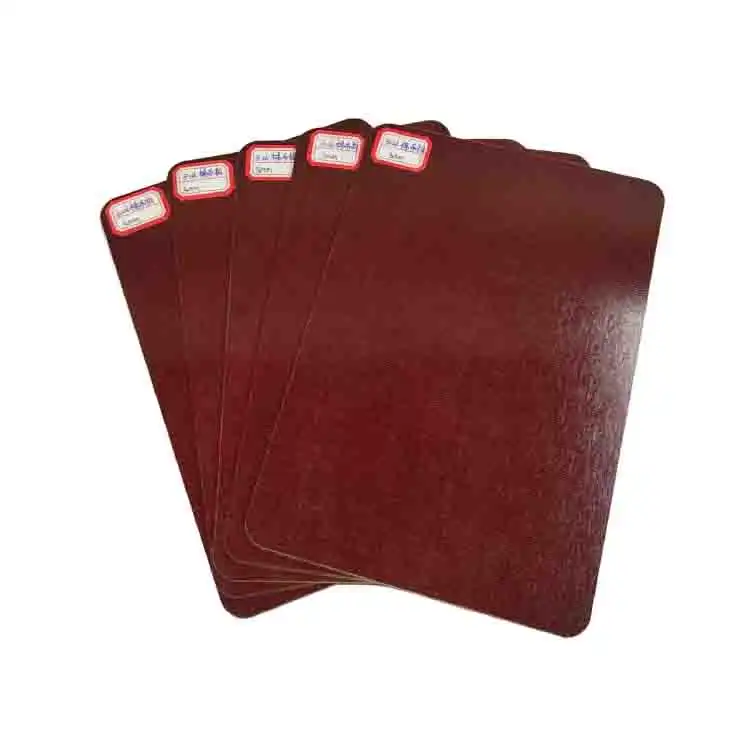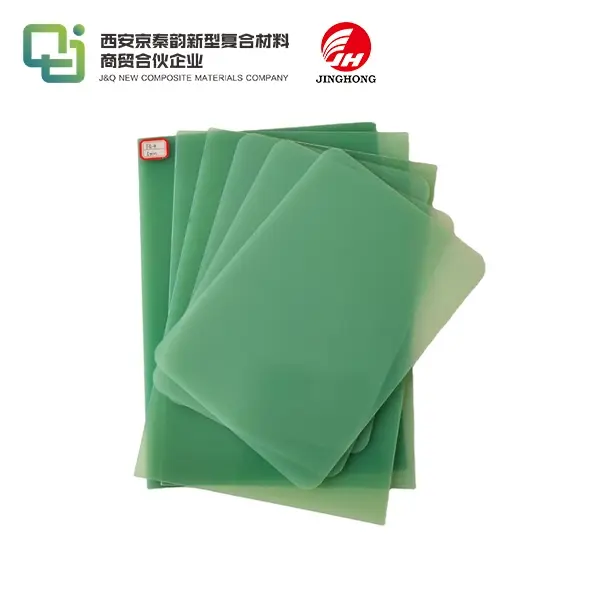What Are the Properties of Glass Cloth in Epoxy Laminate?
2025-02-11 17:15:15
Glass cloth in epoxy laminate possesses a unique combination of properties that make it an invaluable material in various industries. Its remarkable strength-to-weight ratio, excellent electrical insulation, and superior thermal resistance are key attributes. The glass fibers provide reinforcement, enhancing mechanical strength and dimensional stability, while the epoxy resin offers chemical resistance and adhesion. This composite material also exhibits low moisture absorption, flame retardancy, and good machinability. These properties collectively contribute to the widespread use of glass cloth epoxy laminates in electronics, aerospace, and construction applications, where reliability and performance are paramount.
Mechanical Properties of Glass Cloth in Epoxy Laminate
Tensile Strength and Modulus
Glass cloth epoxy laminates boast impressive tensile strength, typically ranging from 200 to 400 MPa, depending on the specific grade and composition. This high strength-to-weight ratio makes them ideal for applications requiring robust yet lightweight materials. The tensile modulus, a measure of stiffness, can vary between 15 to 25 GPa, providing excellent rigidity without compromising flexibility.
Flexural Properties
The flexural strength of glass cloth epoxy laminates is another noteworthy characteristic, often exceeding 300 MPa. This property ensures the material can withstand bending forces without failure, crucial in applications such as circuit boards and structural components. The flexural modulus, typically in the range of 18 to 28 GPa, contributes to the material's ability to resist deformation under load.
Impact Resistance
Glass cloth reinforcement significantly enhances the impact resistance of epoxy laminates. The Izod impact strength can range from 500 to 800 J/m, depending on the laminate thickness and glass content. This toughness is vital in protecting electronic components from mechanical shocks and vibrations, ensuring long-term reliability in demanding environments.
Electrical Properties of Glass Cloth Epoxy Laminates
Dielectric Strength
One of the most critical electrical properties of glass cloth epoxy laminates is their high dielectric strength, typically ranging from 20 to 40 kV/mm. This impressive insulation capability enables the material to endure significant voltage gradients without risk of electrical breakdown. As a result, it plays a vital role in high-power applications, including electronics, transformers, and circuit boards. Its reliability in preventing electrical failure ensures efficient operation and longevity in demanding electrical environments.
Volume Resistivity
Glass cloth epoxy laminates are known for their excellent volume resistivity, often surpassing 10^14 ohm-cm. This high resistivity effectively prevents current leakage through the material, which is vital for maintaining signal integrity in sensitive electronic components like printed circuit boards (PCBs). The strong resistance to electrical flow enhances the laminate’s overall insulation properties, making it a reliable choice for applications where minimal electrical interference and high-performance insulation are essential for device functionality and longevity.
Dissipation Factor
The dissipation factor, or loss tangent, of glass cloth epoxy laminates is typically low, ranging from 0.010 to 0.025 at 1 MHz. This low dissipation factor signifies minimal energy loss when the material is subjected to alternating electric fields, ensuring the preservation of high-frequency signals. Such properties make these laminates ideal for applications like high-speed circuits, where signal clarity and minimal distortion are essential. Additionally, the reduced energy loss contributes to lower heat generation, improving the efficiency and longevity of electronic components.

Thermal and Environmental Properties of Glass Cloth Epoxy Composites
Glass Transition Temperature
The glass transition temperature (Tg) of glass cloth epoxy laminates is a crucial parameter determining their thermal performance. Depending on the epoxy resin system used, Tg values can range from 130°C to over 200°C for high-performance grades. This high Tg ensures dimensional stability and retention of mechanical properties at elevated temperatures, making these laminates suitable for applications in harsh thermal environments.
Coefficient of Thermal Expansion
Glass cloth epoxy laminates exhibit a relatively low coefficient of thermal expansion (CTE), typically in the range of 14-18 ppm/°C in the x-y plane. This low CTE is advantageous in applications where dimensional stability over a wide temperature range is crucial, such as in multilayer printed circuit boards. The z-axis CTE is generally higher, around 50-70 ppm/°C, due to the anisotropic nature of the laminate structure.
Flame Retardancy
Many glass cloth epoxy laminates are formulated with flame retardant additives, achieving UL 94 V-0 ratings. This self-extinguishing property is essential for safety in electronic and aerospace applications. Advanced formulations can maintain this flame retardancy while also meeting stringent environmental regulations, such as RoHS compliance, ensuring both safety and eco-friendliness.
Conclusion
Glass cloth in epoxy laminates offers a remarkable combination of mechanical, electrical, and thermal properties. Its high strength, excellent electrical insulation, and thermal stability make it an indispensable material in numerous high-performance applications. From its impressive tensile and flexural strengths to its superior dielectric properties and flame retardancy, glass cloth epoxy laminates continue to be at the forefront of material science innovations. As industries push the boundaries of technology, these versatile composites will undoubtedly play a crucial role in shaping the future of electronics, aerospace, and beyond.
Contact Us
For more information about our high-quality glass cloth epoxy laminates and how they can benefit your specific application, please don't hesitate to contact us at info@jhd-material.com. Our team of experts is ready to assist you in finding the perfect solution for your needs.
References
1. Smith, J. A., & Johnson, R. B. (2019). Advanced Composite Materials: Properties and Applications. Materials Science Publishing.
2. Lee, S. M. (2020). Handbook of Composite Reinforcements. Wiley-VCH.
3. Chen, X., & Liu, Y. (2018). Mechanical and Thermal Properties of Glass Fiber Reinforced Epoxy Composites. Journal of Composite Materials, 52(14), 1893-1905.
4. Thompson, C. M., & Davis, E. L. (2021). Electrical Properties of Glass-Epoxy Laminates for High-Frequency Applications. IEEE Transactions on Dielectrics and Electrical Insulation, 28(3), 876-883.
5. Yamamoto, T., & Sato, K. (2017). Flame Retardancy and Environmental Considerations in Modern Epoxy Laminates. Progress in Polymer Science, 68, 1-28.
6. Brown, A. R., & Wilson, D. G. (2022). Glass Cloth Epoxy Laminates: From Printed Circuit Boards to Aerospace Structures. Advanced Engineering Materials, 24(5), 2100456.





 拷贝.webp)

